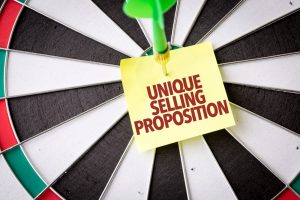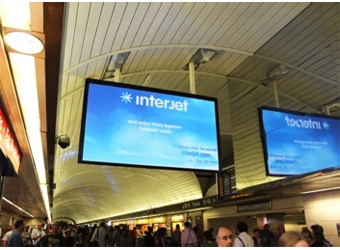Why should anyone choose your sign shop rather than your competitors’ shops? If you can’t articulate your company’s unique product differential, you’re leaving your chances for success, well, up to chance.
 Perhaps your prospects walk through your door because they see your shop while driving past it? Or maybe your company was listed in an Internet search? Possibly someone mentioned your shop in passing? If so, these are hardly world-shaking marketing advantages.
Perhaps your prospects walk through your door because they see your shop while driving past it? Or maybe your company was listed in an Internet search? Possibly someone mentioned your shop in passing? If so, these are hardly world-shaking marketing advantages.
In a competitive sales situation, you are often relegated to selling price without a unique selling proposition (USP). Without a product differential, your products and services are no better than commodities. This makes realizing healthy profit margins difficult if not impossible.
Discovering and defining your USP is not an easy job. It requires significant soul searching. Unfortunately most shop owners give little thought to how they will differentiate their business from the others.
As a business, what do you stand for that would compel prospective customers to do business with you? As a company, what value do you provide that differentiates you from your competitors?
Once you have decided upon your shop’s USP, develop a plan for delivering your message on your Web site, on social media, and in your advertising (while avoiding tired and trite clichés). If your unique selling proposition centers around the concept that you can dramatically transform a company’s identity, you need to demonstrate that in your messaging.
One way you can do this is to show before and after pictures of a company’s signage, fleet graphics, or interior store graphics. Another way is to develop testimonial stories about your customers, explaining how your shop designed and implemented new identity programs.
To support your marketing claims, you can present statistics showing how your programs affected your customers’ business by increasing store traffic or by improving sales and profits.
Today you have a number of media channels to help deliver your message. Many of these platforms are low cost (email marketing, social media, and your Web site, for examples). Stories about satisfied customers are powerful because people believe in the written word. Equally important are the messages that you deliver in video clips, in which a satisfied customer relates his personal story.
The storyline could begin with the customer describing a problem or challenge facing his business. This setup leads to the solution in which the customer explains how the new graphics program was developed and executed. To conclude this testimonial, the customer describes what impact the program had on the company’s business and the uplifting effect it had on employee attitudes. A testimonial is one type of storytelling device that you can use to support your unique selling proposition.
After defining your USP, you must project what differentiates your shop from others consistently in your corporate imagery and in the messaging in your advertising and marketing materials to your target markets, your community, and your employees. Every business is unique in some way. Recognizing what makes your shop special is usually difficult for business owners to realize.
Often an outsider who knows you and your business well can more easily identify and articulate your differentials better than you can. That’s why you might consider asking a trusted friend for help in defining your USP.
Early in my marketing career, I was assigned to create a sales brochure for a plastics molding company. Upon first touring the facility, the manufacturing plant seemed unremarkable at best; in fact, the interior presented a grim picture of a graying, aging industrial setting.
The president of the company, “George,” viewed his plant through very different eyes. He had built his company from the ground up and was proud of his array of various types of compression and injection molding machinery he had collected in his thirty-five years of business.
What George didn’t realize was that his business was more than machines. All of his competitors had machines too.
After spending time with his employees, they explained what made their company remarkable. It was George himself. When you bought from their company, you bought thirty-five years of George’s experience in engineering and producing difficult jobs that other companies could not.
Instead of spotlighting machinery, we featured George throughout the brochure. After all, he was the company’s USP. If you have a plastics molding problem, call George. His thirty-five years of problem solving experience was why a prospective buyer should buy from George’s shop instead of another.
We used a picture of George on the cover of the brochure. (To keep him happy, his machinery was in the distant background.) As company president, George wore a white shirt and tie, but his sleeves were rolled up as his elbows rested on bags of plastic pellets. The image that he projected was friendly, approachable, and experienced.
The narrative of the brochure supported the theme that George could make the impossible project possible. Here’s my point: If you’re having difficulty defining what makes your shop unique and special, you may not be seeing the forest for the trees. You might need a fresh set of eyes that see you for who you are.









